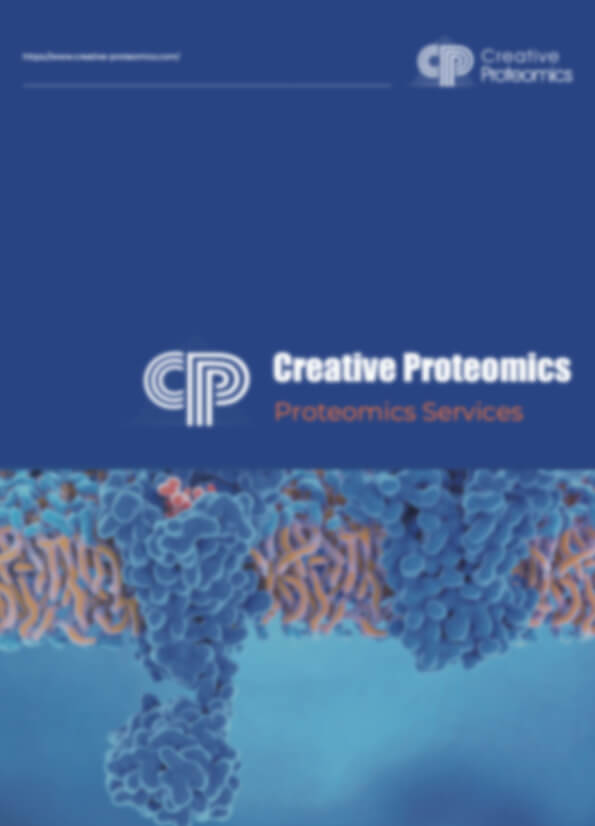- Service Details
- Demo
- Case Study
- FAQ
- Publications
What is Phosphorylation?
Phosphorylation is a pivotal post-translational modification (PTM) in cellular biochemistry, where a phosphate group is covalently attached to specific amino acid residues of a protein. This modification is catalyzed by protein kinases and can alter the protein's function significantly. Phosphorylation predominantly occurs on serine, threonine, tyrosine, and in some cases, histidine residues. It is a dynamic and reversible process that can toggle the activity of proteins, thereby influencing a range of biological functions and signaling pathways.
Phosphorylation serves as a key regulatory mechanism in cellular processes, impacting everything from cell growth and metabolism to division and apoptosis. By adding or removing phosphate groups, cells can rapidly and reversibly modulate protein activities in response to internal and external signals. This ability to adjust protein function on-the-fly makes phosphorylation crucial for maintaining cellular homeostasis and responding to environmental changes. Given its central role in regulating various biological pathways, understanding phosphorylation patterns is essential for insights into disease mechanisms, drug development, and therapeutic strategies.
Phosphorylation can induce conformational changes in proteins, thereby activating or deactivating their functions. For example, phosphorylation might change an enzyme's catalytic activity, alter a receptor's binding affinity, or affect a protein's interaction with other cellular components. Additionally, phosphorylation can influence protein localization, stability, and interaction with other biomolecules, further underscoring its versatility as a regulatory mechanism. The ability to precisely map these modifications is crucial for understanding the intricate regulation of cellular processes.
Comprehensive Phosphorylation Site Identification at Creative Proteomics
At Creative Proteomics, we offer phosphorylation site identification service designed to provide detailed insights into phosphorylation patterns across various proteins. Our service covers the identification of all phosphorylation sites, including serine (Ser), threonine (Thr), and tyrosine (Tyr) residues. This comprehensive approach ensures that we capture the full spectrum of phosphorylation events in a given protein sample, providing a thorough understanding of the modification's impact on protein function.
Phosphorylation Site Identification Analysis Platform
Sample Preparation
Our phosphorylation site identification process begins with meticulous sample preparation. Samples can be provided in-gel or in-solution. For in-gel samples, we perform cleaning and buffer exchange to ensure the removal of interfering substances. In-solution samples undergo similar preparation steps to maintain the integrity of the protein and ensure accurate results. Following sample preparation, we employ reduction and alkylation techniques to modify disulfide bonds and prepare proteins for enzymatic digestion.
Enrichment of Phospho-Peptides
Given that phosphorylated peptides often constitute only a small fraction of the total protein population, enriching these peptides is crucial for accurate site identification. Our protocol includes advanced phospho-peptide enrichment techniques to isolate and concentrate phosphorylated peptides. This step significantly enhances the sensitivity of the subsequent mass spectrometry analysis.
Mass Spectrometry Analysis
The core of our identification service involves mass spectrometry analysis, which includes HPLC separation and MALDI-TOF MS/MS analysis. HPLC separates peptides based on their properties, while MALDI-TOF MS/MS provides detailed information on peptide masses and fragmentation patterns. This data allows us to identify phosphorylation sites by detecting phosphorylated ions and observing neutral loss of phosphate groups in the MS/MS spectra.
Data Interpretation
Interpreting mass spectrometry data is a critical aspect of our service. We use sophisticated algorithms and databases to analyze the MS/MS spectra, identifying the exact locations of phosphorylation sites on the protein sequence. Our expertise ensures that even low-abundance phospho-peptides are accurately detected and reported, providing a comprehensive overview of the phosphorylation landscape in your samples.
Sample Requirements for Phosphorylation Site Identification
| Sample Type | Recommended Quantity | Preparation Notes |
|---|---|---|
| Purified Proteins | 50-100 µg | Ensure high purity and concentration. |
| Immunoprecipitated (IP) | 1-2 mg of total protein | Include a positive control. |
| In-Gel Samples | 1-2 gel slices | Excise with minimal contamination. |
| In-Solution Samples | 100-200 µg | Use a buffer compatible with our analysis. |

The Interplay between GSK3β and Tau Ser262 Phosphorylation during the Progression of Tau Pathology
Journal: International Journal of Molecular Sciences
Published: 2022
Background
Tauopathies like Alzheimer's Disease (AD) involve toxic neurofibrillary tangles formed by hyperphosphorylated tau. Key kinases such as GSK-3β and MARKs drive tau hyperphosphorylation, contributing to tau pathology. GSK-3β phosphorylates tau at several sites, promoting tau propagation and pathology. MARKs also play a role, particularly in early tau phosphorylation. Understanding these processes and their contributions to tau spread and neurodegeneration is crucial for developing potential treatments.
Materials & Methods
In Vitro Phosphorylation Assays: Recombinant tau proteins were phosphorylated using GSK-3β enzyme, and phosphorylation was detected by SDS-PAGE and Western blotting with phospho-specific antibodies.
Phosphorylation Sites Identify: Phosphorylated tau proteins were digested into peptides and analyzed using LC-MS/MS to identify phosphorylation sites.
Site-Directed Mutagenesis: Tau constructs with specific mutations at phosphorylation sites (e.g., S262D, S262A) were created and analyzed to confirm the functional relevance of these sites.
Functional Assays: The impact of phosphorylation on tau function was assessed through microtubule binding assays and cellular assays to evaluate tau's localization and aggregation.
Results
Phosphorylation Enhances Tau Uptake and Seeding
Phosphorylated tau (Phospho-0N4R) is more readily taken up by cells and has a greater seeding capacity for tau aggregation compared to non-phosphorylated tau.
 Phosphorylation of tau promotes the uptake of recombinant tau protein and the seeding propensity of tau fibrils in tau biosensor cells
Phosphorylation of tau promotes the uptake of recombinant tau protein and the seeding propensity of tau fibrils in tau biosensor cells
Tau Aggregation in SH-SY5Y Cells
Differentiated SH-SY5Y cells show increased tau expression and aggregation when treated with retinoic acid (RA), modeling human brain tau pathology.
 Tau phospho-isoform expression in differentiated SH-SY5Y cells
Tau phospho-isoform expression in differentiated SH-SY5Y cells
Tau in Extracellular Vesicles (EVs)
GSK3β expression in HEK293 cells increases the concentration of tau in EVs. EVs containing phosphorylated tau lead to higher tau uptake and aggregation in recipient cells.
 Tau inter-neuronal propagation is promoted by phosphorylation.
Tau inter-neuronal propagation is promoted by phosphorylation.
Ser262 Phosphorylation and Tau Secretion
Tau with Ser262 phosphorylation (S262D variant) shows increased secretion and aggregation compared to wild-type tau. This phosphorylation enhances tau oligomer formation and secretion.
Effects on Tau-Microtubule Binding
Ser262 phosphorylation reduces tau's binding to microtubules, leading to altered tau distribution and microtubule instability.
Ser262 Phosphorylation and GSK3β Activity
Phosphorylation at Ser262 enhances tau abnormal phosphorylation and promotes tau accumulation, particularly when GSK3β is co-expressed, leading to increased tau aggregation and insolubility.
Reference
- Song, Liqing, et al. "The Interplay between GSK3β and Tau Ser262 Phosphorylation during the Progression of Tau Pathology." International Journal of Molecular Sciences 23.19 (2022): 11610.
How are potential phosphorylation sites validated experimentally?
Potential phosphorylation sites are validated through:
- Mutagenesis: Create specific mutations at suspected phosphorylation sites (e.g., substituting serine/threonine residues with alanine) to test the functional impact on the protein.
- Phospho-Specific Antibodies: Use antibodies that specifically recognize the phosphorylated form of the protein at the identified sites to confirm their presence.
- Functional Assays: Conduct functional assays to assess how mutations or phosphorylations affect the protein's activity or interaction with other molecules.
- Comparison with Known Data: Compare identified sites with existing literature and databases to confirm their relevance and correctness.
How can you address issues with low detection sensitivity for phosphorylation sites?
Enhance Sample Preparation: Improve sample concentration and use advanced enrichment techniques to increase the proportion of phosphorylated peptides in the sample.
Optimize Instrument Settings: Adjust mass spectrometer settings such as ionization parameters and sensitivity to enhance detection of low-abundance phosphopeptides.
Increase Signal-to-Noise Ratio: Use techniques that enhance the signal-to-noise ratio, such as higher resolution chromatography and more sensitive detection methods.
Use Advanced Analytical Techniques: Employ more sensitive mass spectrometry techniques or alternative methods like targeted MS (e.g., Multiple Reaction Monitoring, MRM) for better detection of specific phosphorylation sites.
How do you interpret data from mass spectrometry for phosphorylation site identification?
- Analyzing Mass Spectra: Review the mass spectra to identify peaks corresponding to phosphorylated peptides. The presence of phosphate groups is indicated by specific mass shifts.
- Peptide Sequencing: Use tandem mass spectrometry (MS/MS) data to sequence peptides and identify phosphorylation sites. Look for characteristic fragmentation patterns that indicate the presence of phospho-tyrosine, phospho-serine, or phospho-threonine residues.
- Software Analysis: Utilize specialized software for data analysis, which can help in identifying and quantifying phosphorylated peptides and mapping phosphorylation sites based on peptide fragmentation patterns.
- Validation and Cross-Referencing: Validate findings by comparing with known phosphorylation site databases and cross-referencing with experimental controls.
The Interplay between GSK3β and Tau Ser262 Phosphorylation during the Progression of Tau Pathology.
Song, L., Oseid, D. E., Wells, E. A., & Robinson, A. S.
Journal: International Journal of Molecular Sciences
Year: 2022
https://doi.org/10.3390/ijms231911610
Trypanosoma cruzi DNA Polymerase β Is Phosphorylated In Vivo and In Vitro by Protein Kinase C (PKC) and Casein Kinase 2 (CK2).
Maldonado, E., Rojas, D. A., Urbina, F., Valenzuela-Pérez, L., Castillo, C., & Solari, A.
Journal: Cells
Year: 2022
https://doi.org/10.3390/cells11223693
Exploratory phosphoproteomics profiling of Aedes aegypti Malpighian tubules during blood meal processing reveals dramatic transition in function.
Kandel, Y., Pinch, M., Lamsal, M., Martinez, N., & Hansen, I. A.
Journal: Plos One
Year: 2022
https://doi.org/10.1371/journal.pone.0271248








